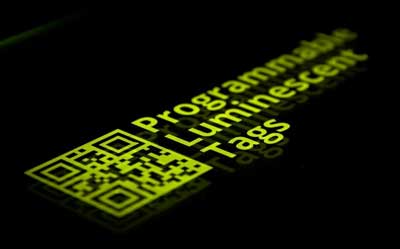Nanowerk February 1, 2019
Researchers in Germany introduced organic luminescent molecules plastic foils. In the beginning, these molecules are in an inactive, dark state. By locally using ultraviolet irradiation, it is possible to turn the dark state into an active, luminescent one. By mask illumination or laser writing, activated patterns can be printed and the imprinted information can be read. Ultraviolet radiation induces a chemical reaction which efficiently removes the oxygen from the layer activating the luminescent molecules. By illuminating with infrared light, the tag is erased completely, and new data can be written into it. The deactivation process is based on a temperature rise of the foil, leading to an increased oxygen permeability and therefore a refilling of the layer with oxygen. The tags can be manufactured in any size at low cost. Information such as barcodes, serial numbers or addresses can be hidden for on-demand readout only enhancing document security and anti-counterfeiting…read more. Open Access TECHNICAL ARTICLE

A luminescent tag, contactless printed onto a plastic foil. The light emitting layer is thinner than a human hair. The imprint can be erased and replaced by another pattern. Credit: Image: M. Gmelch and H. Thomas, TU Dresden